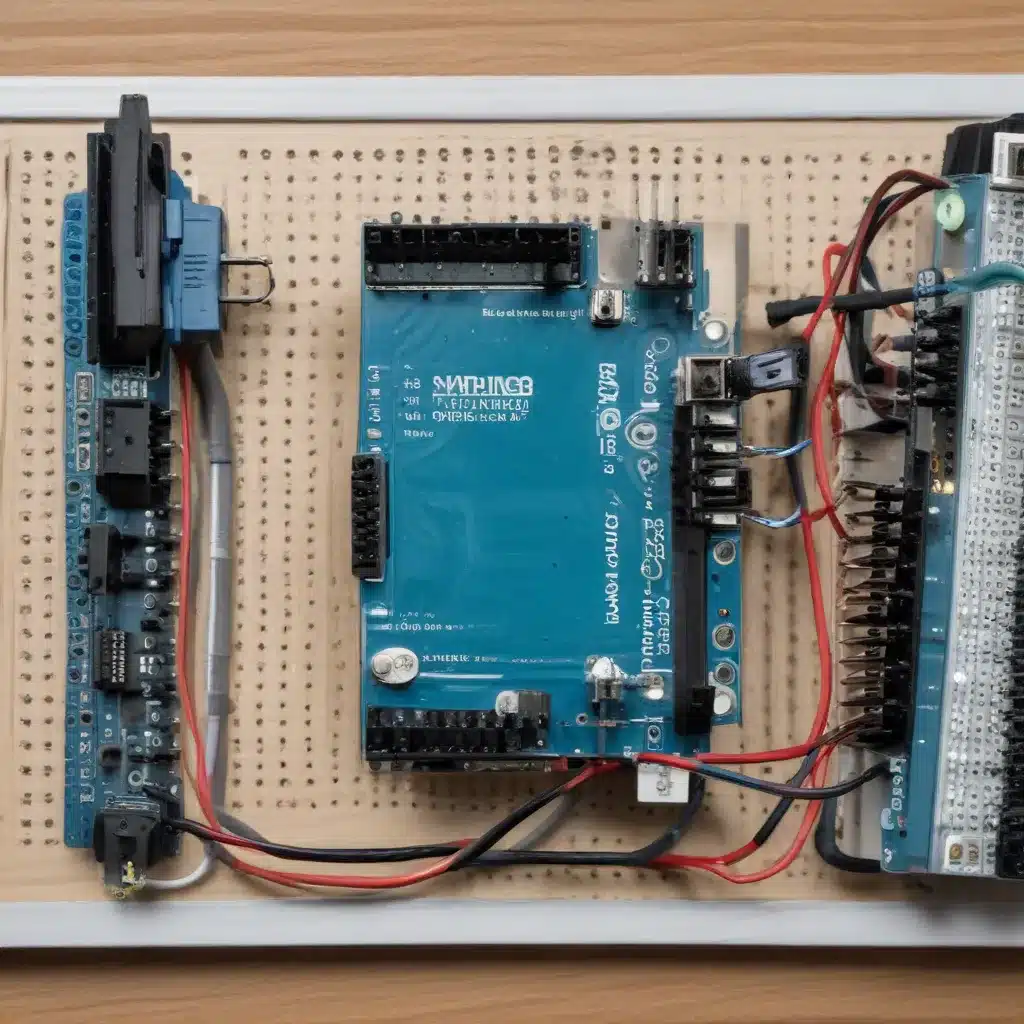
Unleashing the Potential of Arduino in Residential Electrical Applications
As a seasoned electrical expert, I’m thrilled to share my insights on harnessing the remarkable capabilities of Arduino for transformative home electrical projects. In an age where energy efficiency and smart home technology have become paramount, Arduino presents a versatile and accessible platform for homeowners and DIY enthusiasts to take control of their electrical systems, enhance sustainability, and unlock the full potential of their living spaces.
Empowering Sustainable Energy Solutions with Arduino
One of the most exciting applications of Arduino in the home is its ability to facilitate sustainable energy solutions. By integrating Arduino-based systems, homeowners can monitor and optimize their energy consumption, identifying areas for improvement and implementing targeted strategies to reduce their carbon footprint.
Consider the example of a wind-powered battery charging system. As outlined in the Arduino forum discussion, it is entirely possible to leverage a DC motor, driven by wind or even manual rotation, to generate electricity and charge a rechargeable battery. By carefully selecting the appropriate motor, implementing a voltage-boosting circuit, and incorporating an Arduino-based control system, homeowners can harness the power of the elements to keep their devices charged and reduce their reliance on the grid.
Similarly, Arduino can be used to integrate and manage small-scale wave power generators, as demonstrated in the Instructables project. By developing custom control systems and monitoring mechanisms, homeowners can seamlessly incorporate renewable energy sources into their homes, contributing to a more sustainable and self-sufficient energy landscape.
Key Considerations for Sustainable Energy Projects:
– Carefully match motor specifications to the energy generation requirements
– Incorporate voltage regulation and charge control circuitry to protect batteries
– Leverage Arduino’s programmable capabilities to monitor performance, enable smart charging, and optimize energy usage
– Explore integrating multiple renewable energy sources, such as wind and wave power, for a diversified energy portfolio
Enhancing Home Automation and Smart Devices with Arduino
Beyond sustainable energy solutions, Arduino shines in its ability to transform ordinary home appliances and devices into intelligent, interconnected systems. By leveraging Arduino’s versatile input/output capabilities and programming flexibility, homeowners can create customized smart home solutions tailored to their unique needs and preferences.
One area where Arduino excels is in the control and automation of lighting systems. Whether it’s precisely managing the LED lighting in a model starship or integrating smart lighting solutions throughout the home, Arduino provides the necessary tools to precisely control brightness, color, and scheduling to enhance energy efficiency and personalize the living environment.
Wiring Considerations for LED Projects:
– Opt for 24-26 AWG stranded wiring for most LED applications, as it provides a balance of flexibility and manageable resistance
– For higher-power LED strips or arrays, consider using 22-20 AWG wiring to accommodate the increased current requirements
– Always remember to implement appropriate current-limiting resistors to protect your LEDs and ensure their longevity
By harnessing Arduino’s capabilities, homeowners can seamlessly integrate lighting controls, motion sensors, and even voice commands to create a truly intelligent and responsive home environment. From automatically adjusting lighting based on occupancy to synchronizing lighting with smart home routines, the possibilities are endless.
Ensuring Electrical Safety and Proper Wiring Practices
While the allure of Arduino-powered home projects is undeniable, it’s crucial to emphasize the importance of electrical safety and proper wiring practices. As an experienced electrical expert, I cannot stress enough the need to adhere to local electrical codes, utilize appropriate wiring gauges, and always prioritize safety when working with electricity.
When engaging in any DIY electrical projects, it’s essential to understand the fundamentals of Ohm’s Law and how it applies to the specific components and wiring involved. This knowledge will not only ensure the proper selection of wire gauge and current-limiting resistors but also prevent potential safety hazards and equipment damage.
Temporary Wiring Harnesses and Connectors:
– For quick, non-permanent connections, consider using header sockets, 0.1-inch breakaway headers, or wire-wrapping techniques
– These solutions allow for easy assembly and disassembly, facilitating prototyping and experimentation without the need for soldering
– However, for long-term, reliable connections, it’s recommended to learn and apply proper soldering techniques
By maintaining a thorough understanding of electrical principles and safety practices, homeowners can confidently tackle Arduino-based projects, ensuring the integrity and longevity of their home electrical systems.
Exploring the Boundless Possibilities of Arduino in the Home
The versatility of Arduino in home electrical applications is truly remarkable. From sustainable energy solutions to intelligent home automation, this powerful microcontroller platform empowers homeowners to take control of their living environments, optimize energy usage, and embrace the future of smart home technology.
As you embark on your own Arduino-powered electrical projects, I encourage you to embrace the spirit of innovation, experiment with new ideas, and continuously seek to expand your knowledge. By harnessing the power and flexibility of Arduino, you can transform your home into a showcase of sustainable, intelligent, and personalized electrical systems.
Remember, safety should always be the top priority when working with electricity. Stay curious, stay informed, and stay safe as you unlock the boundless possibilities of Arduino in your home electrical projects.
For more inspiring ideas and technical guidance, I invite you to explore the resources available on Volt Watt Electric – a hub dedicated to empowering homeowners and DIY enthusiasts with the knowledge and tools to harness the power of electricity and create the home of the future.

